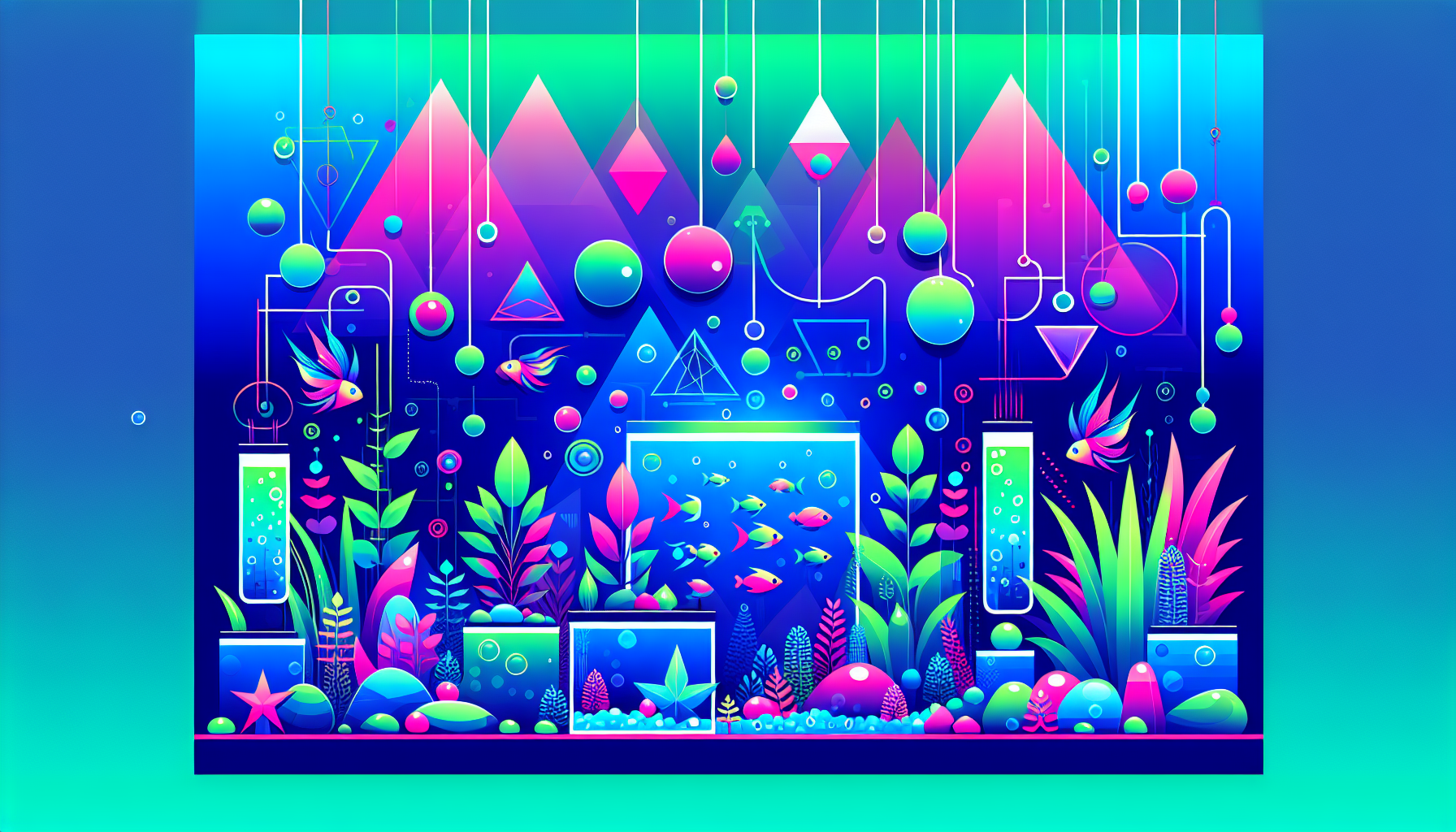The Ultimate Guide to Low Tech Planted Aquariums: Setup, Plants & Maintenance
Are you dreaming of a lush, underwater paradise without the complications and expense of CO₂ injection or high-powered lights? Then a low tech planted aquarium may be the perfect solution for you. In this comprehensive guide, we’ll walk you through everything you need to know about low tech tanks—from selecting the best aquatic plants to easy aquarium maintenance tips. Whether you’re a beginner or simply looking for a lower-maintenance aquascaping experience, let’s dive in!
What Is a Low Tech Planted Aquarium?
A low tech planted aquarium is an aquatic ecosystem that thrives with minimal technology. Unlike high tech setups, which use pressurized CO₂ systems and intense lighting, low tech tanks rely on ambient CO₂ and moderate lighting, making them more accessible, budget-friendly, and easier to maintain.
- No CO₂ injection: Relies on natural sources of carbon dioxide.
- Moderate lighting: Uses less powerful light fixtures.
- Low-maintenance plants: Favors hardy plant species that adapt well to basic conditions.
- Lower setup and operating costs.
Benefits of a Low Tech Planted Aquarium
- Perfect for beginners and busy aquarists
- Lower risk of algae outbreaks due to slower plant growth
- Offers a natural and balanced ecosystem for fish and invertebrates
- Minimal ongoing maintenance required
How to Set Up Your Low Tech Planted Aquarium
1. Choosing the Right Aquarium Size
Low tech setups work well in tanks of all sizes, but a 20- to 40-gallon aquarium makes it easier to maintain stable water parameters and offers plenty of space for aquascaping creativity. Smaller tanks are more affordable but require closer attention to water quality.
2. Selecting the Best Substrate
The substrate is the foundation of any planted aquarium. For low tech tanks, consider these options:
- Nutrient-rich substrates: Such as ADA Aqua Soil or Fluval Stratum, which provide essential minerals for plant roots.
- Inert substrates: Like sand or gravel, may require root tabs or liquid fertilizers.
Learn more about choosing the right aquarium substrate for optimal plant growth.
3. Ideal Lighting for Low Tech Aquascapes
Lighting should be moderate—look for LED fixtures rated at 6500K (daylight spectrum) and provide 0.5 – 1 watt per liter. Most plants in low tech tanks require only 6-8 hours of light daily. Excessive lighting can promote algae, so use a timer for consistency.
4. Filtration and Water Circulation
Efficient filtration is essential for maintaining clear water and healthy plant growth. Hang-on-back filters, sponge filters, or internal filters work well for low tech aquariums. Gentle water flow is ideal—you want to avoid disturbing plants or creating strong currents.
5. Hardscape: Adding Rocks and Driftwood
Hardscape elements like rocks (Seiryu, lava rock) and driftwood add structure, enhance visual appeal, and create hiding spots for fish. Make sure to prepare driftwood properly to avoid discoloration or pH swings.
Best Plants for Low Tech Aquariums
Plant selection is key for a successful low tech setup. Choose hardy, slow-growing species that don’t demand high light or extra CO₂.
- Anubias (Anubias barteri, Anubias nana)
- Java Fern (Microsorum pteropus)
- Cryptocoryne species (e.g., Cryptocoryne wendtii)
- Amazon Sword (Echinodorus bleheri)
- Java Moss (Taxiphyllum barbieri)
- Vallisneria (Vallisneria spiralis, V. americana)
- Sagittaria (Sagittaria subulata)
These plants are forgiving, require little intervention, and thrive in a variety of aquarium conditions. Read our beginner’s guide to aquarium plants for more inspiration.
Planting Techniques
- Attach rhizome plants (like Anubias & Java Fern) to rocks or driftwood instead of burying them
- Plant rooted species gently into the substrate
- Trim and thin crowded stems to encourage bushier growth
Essential Maintenance Tips for Low Tech Tanks
One of the best things about low tech planted aquariums is their ease of care. Follow these maintenance routines to keep your aquascape thriving:
- Weekly water changes: 20-30% to remove excess nutrients
- Monitor water parameters: Aim for pH 6.5-7.5, stable temperature (22-26°C/72-78°F), and low ammonia/nitrite
- Prune plants as needed: Cut back dead leaves and overgrowth
- Occasional fertilization: Use liquid fertilizers or root tabs if you see pale leaves or slow growth
- Clean algae: Use an algae scraper or introduce algae-eating fish and shrimp for natural control
Common Problems & Solutions
- Algae overgrowth: Reduce lighting duration, avoid overfeeding fish, and balance plant mass
- Yellowing leaves: May indicate nutrient deficiency—consider adding root tabs or an all-in-one liquid fertilizer
- Melting leaves: Some plants (e.g. Cryptocoryne) may “melt” after planting; they usually recover with time
Stocking Ideas: Fish and Invertebrates
Low tech planted aquariums support a wide variety of aquatic life. Opt for peaceful, plant-friendly species like:
- Tetras, rasboras, and danios
- Dwarf corydoras and otocinclus catfish
- Cherry shrimp, Amano shrimp, and nerite snails
- Betta fish or gouramis (1 per aquarium recommended)
Check out our guide to nano fish for planted tanks for more stocking inspiration.
Conclusion: Enjoying a Beautiful, Low Maintenance Aquascape
Creating a low tech planted aquarium is a rewarding, enjoyable project that offers all the beauty of a lush aquascape with a fraction of the effort and cost of high tech systems. By choosing the right plants, lighting, substrate, and maintenance routines, you’ll enjoy a thriving underwater world that supports healthy fish and robust plant life.
Ready to transform your aquarium? Discover more hands-on guides and aquascaping inspiration at Aquascaping Academy. If you have questions or want to share your low tech success, drop a comment below or join our community forum!



